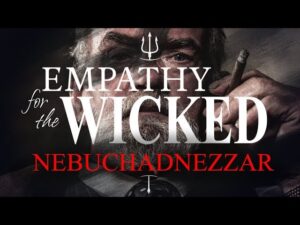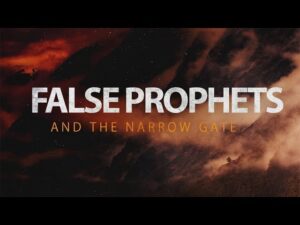The First Sheaf and the Empty Tomb
Message recorded live on

The First Sheaf and the Empty Tomb

Welcome to the teaching from Founded in Truth Fellowship, delivered by Matthew Vander Els. Today we delve into the profound significance of Yom HaBikrim, the Feast of First Fruits. This seemingly minor festival emerges as a theological keystone, intimately connected to the resurrection of Yeshua (Jesus) and our understanding of new creation.
The Overlooked Festival
While Passover and Shavuot command the spotlight with their dramatic narratives of liberation and divine empowerment, Yom HaBikrim quietly marks a pivotal moment in the biblical calendar. In Leviticus 23, the command to present the first sheaf of barley before the Lord symbolizes the promise and sanctity of the entire harvest to come. The Hebrew word reshit, meaning “the first” or “beginning,” connects this ritual to Genesis, where creation itself was initiated (Genesis 1:1).
This sermon emphasizes the alignment between the act of presenting the first sheaf and Yeshua’s resurrection. Both signify the onset of a new creation, bridging the old world and the world to come, and setting a pattern for God’s promise to renew all creation.
Resurrection: The Promise of New Creation
Yeshua’s resurrection, happening on the day of First Fruits, is not simply a display of divine power but a foretaste of the new creation, a down payment on the cosmic renewal that God is orchestrating. This reframes our worldview; rather than viewing resurrection solely as an escape, we see it as the beginning of the kingdom’s work here on earth.
The resurrection is not just about Him; it involves all of us. As Paul writes in 1 Corinthians 15, Yeshua is the “firstfruits” of those who have fallen asleep, indicating that His resurrection is the start of the final harvest when God’s kingdom will be fulfilled.
Living in the Rhythm of Resurrection
This teaching urges us to live as people who anticipate the full harvest. The resurrection life should permeate our daily actions, influencing how we love, forgive, and give. Our lives mirror the first sheaf, offered in trust that the full harvest of God’s kingdom is coming.
Empathy for others, as discussed, is central to this new life. Recognizing that everyone has their own struggles helps us respond with grace rather than retaliation. The idea is to love and forgive as Yeshua did, transforming our relationships and communities.
The rhythm of resurrection also involves our finances. Tithing the first of our income symbolizes trust in God’s provision and participation in His kingdom work. This sacrificial giving aligns with the pattern of new creation, reinforcing our reliance on divine grace rather than self-sufficiency.
The Image of a Gardener
John’s Gospel places Yeshua’s resurrection in a garden, drawing a literary and theological parallel to Eden. As the “last Adam” (1 Corinthians 15), Yeshua, the gardener, cultivates new life where the first Adam introduced death. This imagery signifies the reversal of the curse and the birth of a new Eden, where resurrection life continually grows.
In this garden, Mary mistakes Yeshua for a gardener, which is theologically profound. It affirms His role in nurturing new creation, signifying a world that will be restored and renewed. The empty tomb signals the beginning of this process, as the gardener awakens to tend and transform the soil of creation.
Practical Takeaways
- Live in anticipation of the full harvest: Let the hope of resurrection guide your actions and decisions.
- Embrace empathy and forgiveness: See others through the lens of grace, understanding, and love.
- Participate in creation’s renewal: Engage in acts of service, love, and community building as signposts of the kingdom.
- Sacrificial giving: Trust in God’s provision by offering your first fruits as an act of faith and alignment with His purposes.
- Resist conformity: Stand firm in your faith, resisting societal pressures that conflict with kingdom values.
Conclusion
The message concludes with a powerful call to align our lives with the rhythm of resurrection, living as those who have tasted new creation and are awaiting its full realization. It’s a call to be co-gardeners with Yeshua, participating in the great harvest that has begun and will culminate in the fulfillment of God’s promises.
Bible Verses Referenced
Recommended Resources
For more Bible Teachings, click here.
About Founded in Truth Fellowship
Founded in Truth Fellowship is a Messianic Fellowship in Rock Hill, SC that provides Biblical teachings, fellowship, and resources for Biblical studies. Founded in Truth Fellowship is able to spread the gospel and the word of Yeshua because of supporters like you. If Founded in Truth has been a blessing to you or your family, we ask that you would give so that the same messages can bless others.
To give to Founded in Truth Fellowship, click this link: Give to Founded in Truth Fellowship
Founded in Truth Fellowship, 1689 Springsteen Rd, Rock Hill, SC 29730 | (803) 627-8623
Visit our website: https://foundedintruth.com


